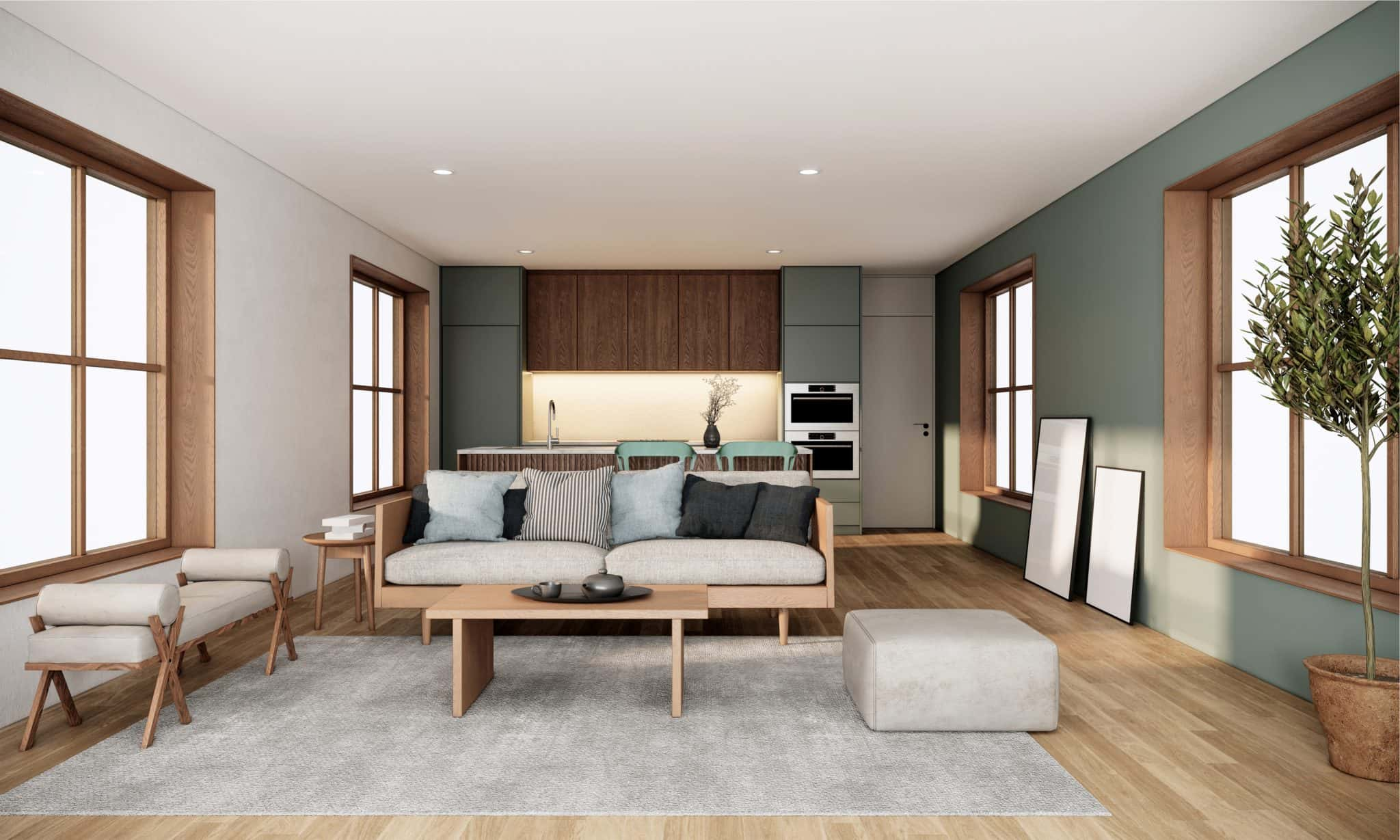What do you get when you marry the clean, minimalistic lines of Scandinavian design with the nature-loving, earthy tones of Japanese décor? Japandi, as it’s called, is the hottest new trend in the world of home décor, and brings together the best of both styles to create a serene, calming oasis of tranquillity in your home. There’s so much to love about this winning fusion of styles, and if you want to try this lovely aesthetic in your home, we’ll show you what it takes!
What’s the Japandi Style all About?
Scandinavian décor emphasizes simplicity and functionality, and uses textures and soft colours to infuse warmth into its spaces. The vibe is stark, yet cosy and comfortable. This décor style also loves the use of natural materials and handmade items, and is high on elegance and style.
Japanese style, on the other hand, has a focus on natural materials, sustainability, and talks about Wabi-Sabi —the beauty in imperfection. Everything is intentional, and perfectly balanced as in nature. The Japanese are constantly in touch with elements of water, earth and air, and thus stay connected to the natural cycles of life.
Japandi, as the name implies, is the perfect blend of these two décor sensibilities. The focus is on an innate connect to nature, while keeping the colour palette warm and muted, and at the same time using carefully placed, minimal and yet beautifully curated furniture and furnishings. A Japandi home has anything and everything in its place, with a deep sense of beauty and humility in the simple lines of its furniture. It helps us appreciate the finer things in life—and in that sense it’s not just a décor style but a whole new way of living!
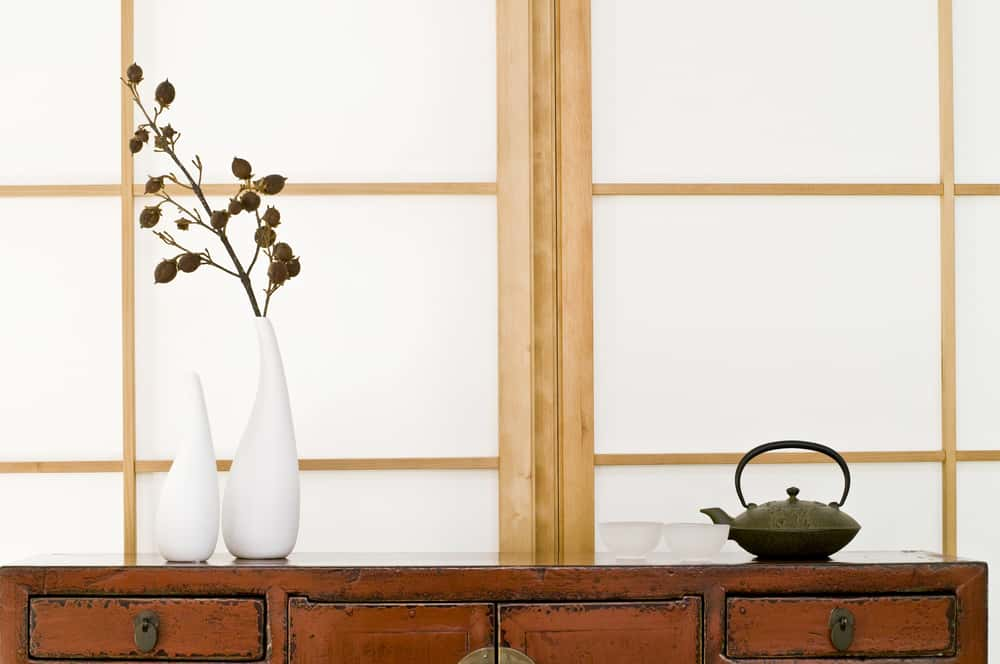
Here’s How to get the Japandi Vibe in Your Home!
Here’s what you should keep in mind when incorporating the Japandi style in your home:
- Go minimal. Declutter your home, keep only what you absolutely need, and give away or recycle the rest.
- Use organic, sustainable materials that are connected to nature and are not artificially enhanced. Examples would be wickerwork in a natural finish, organic linen fabrics, wood that is not stained or painted, and bamboo.
- Balance out the décor in each room with plants, carefully choosing the variety, size and shapes.
- Keep the colour palette soft and restrained. Pops in colour in artwork on the walls, or solid-hued artefacts in the room will alleviate the monotony.
- Every piece of furniture should be chosen with a purpose. Form follows functionality.
- Try to create a connect to nature in every room. Skylights, courtyards that open out to the room through sliding Shoji screens, and water bodies can help to maintain the balance of energy in each space.
- Elements that are imperfect should be left as they are. For instance, a ceramic pot that is oddly shaped, a cracked vase, or a copper vessel that is tarnished and has lost its sheen should all be accepted and loved.
- Your décor elements should be harmonious and with a fluid, interconnected flow of energy through the spaces. Open the inside to the outdoors, through large decks, verandahs and balconies that allow fresh air and light to enter your home. Sunlight should be filtered in and not harsh.
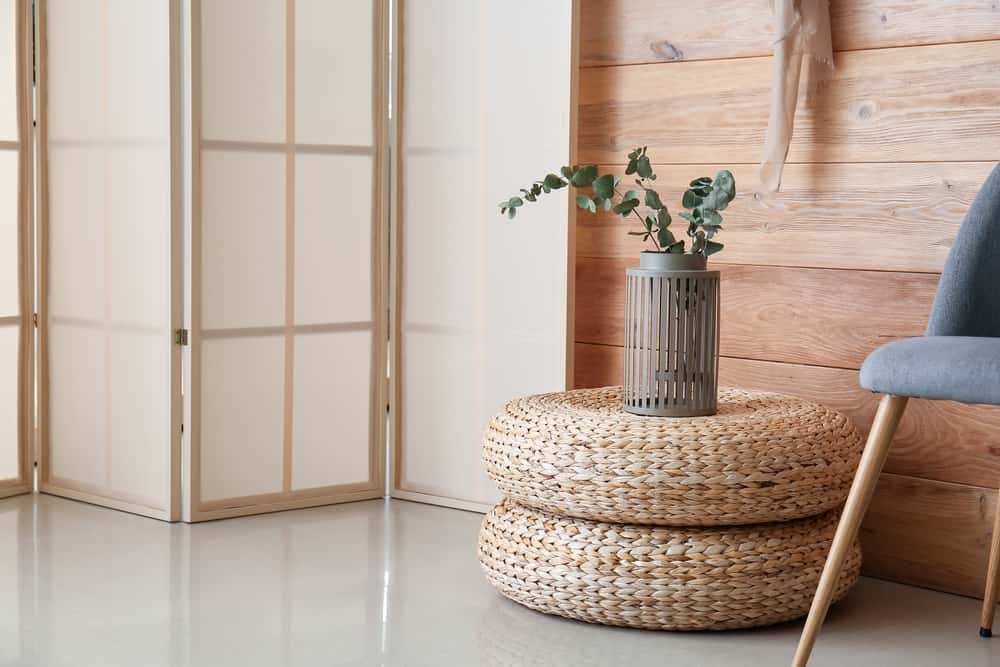
Japandi Lookbook: Ideas that Inspire!
Of Textiles and Textures
The lovely natural weaves of rattan and cane harmonize perfectly with the soft textures in the organic cotton bedlinen, in this bedroom that’s a beautifully balanced union of Eastern and Western design thinking. An exercise in minimalism, the colours in this room range from the palest shades of rose to creams and beige, and tie together the clean, calm aesthetics.
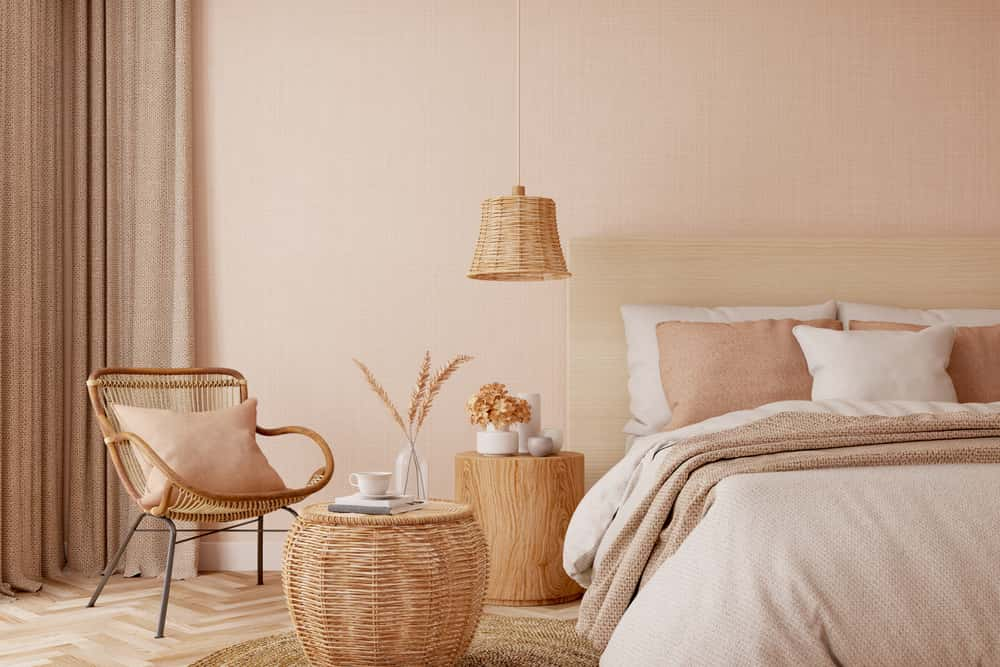
A Study in Contrast
Scandinavian design loves blonde wood finishes, while the Japanese palette leans toward shades of white. This minimal kitchen represents the perfect fusion of the two, with the clean lines of the upper cabinets in stark contrast to the natural whorls and patterns of the oak wood drawers below. Note how the simple wooden borders around the drawers create a subtle relief against the plain backdrop.
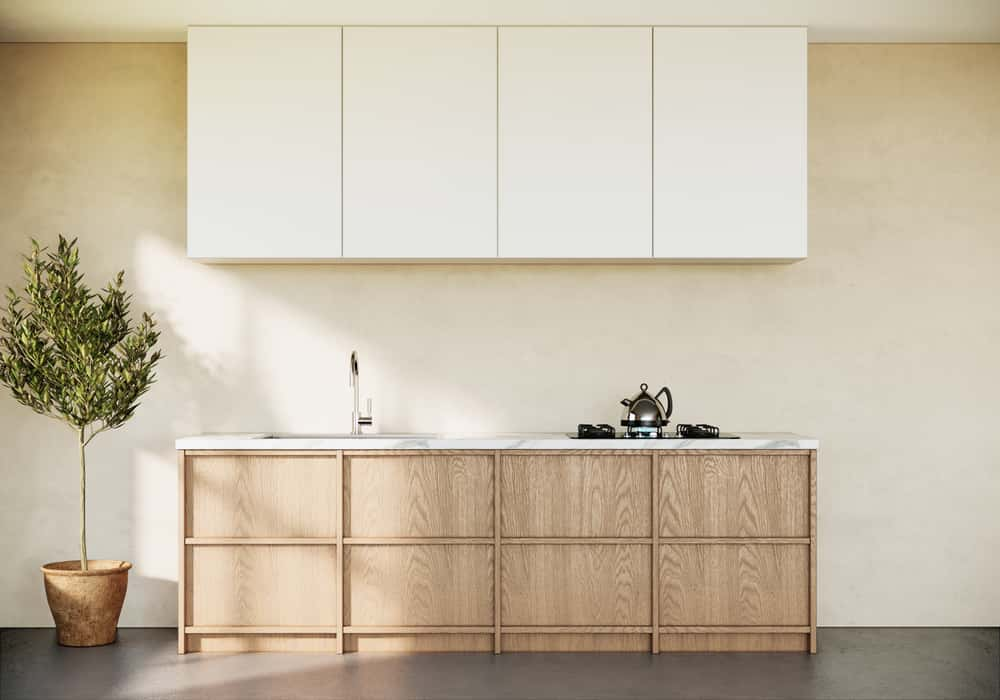
Organic Lifestyles
Japandi design has an eye on sustainability, and holistic materials like wool, cotton and wood are typical of this style. With more and more homeowners looking for eco-friendly ways of living that don’t harm the planet, Japandi is a perfect match for their green ideologies. Japandi furniture is built to last, and every item in the home is of the highest quality.
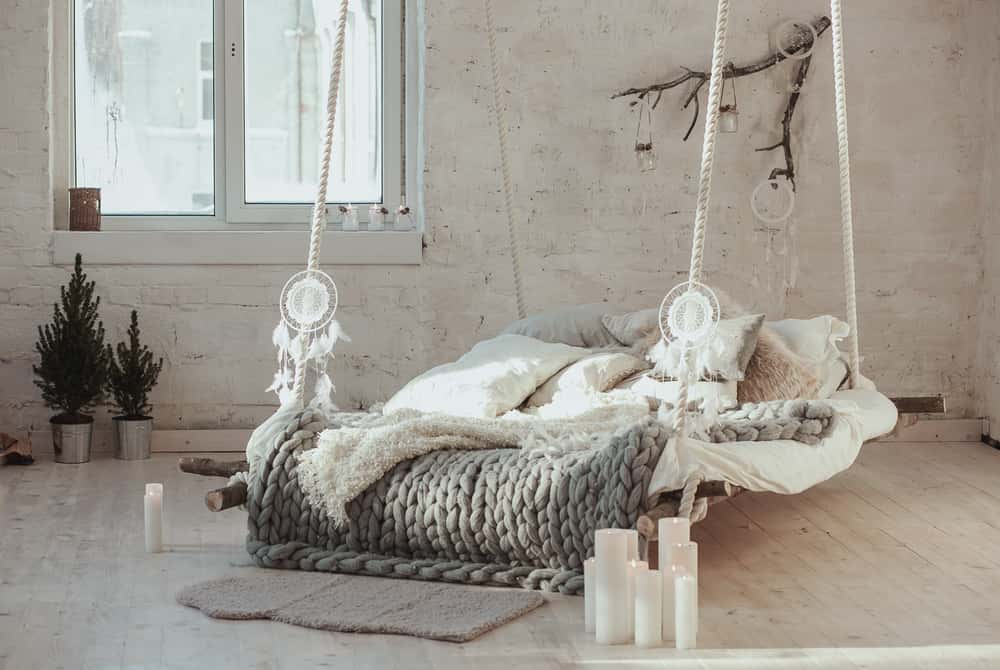
Zen and the Art of Simple Living
Zen philosophy encapsulates simple living, and this Zen-inspired bedroom is a quiet, soothing sanctuary from the stress of everyday life. The delicate paintings on the walls are influenced by Zen ideals, while the blonde wood frames and flooring are derived from Nordic tastes.
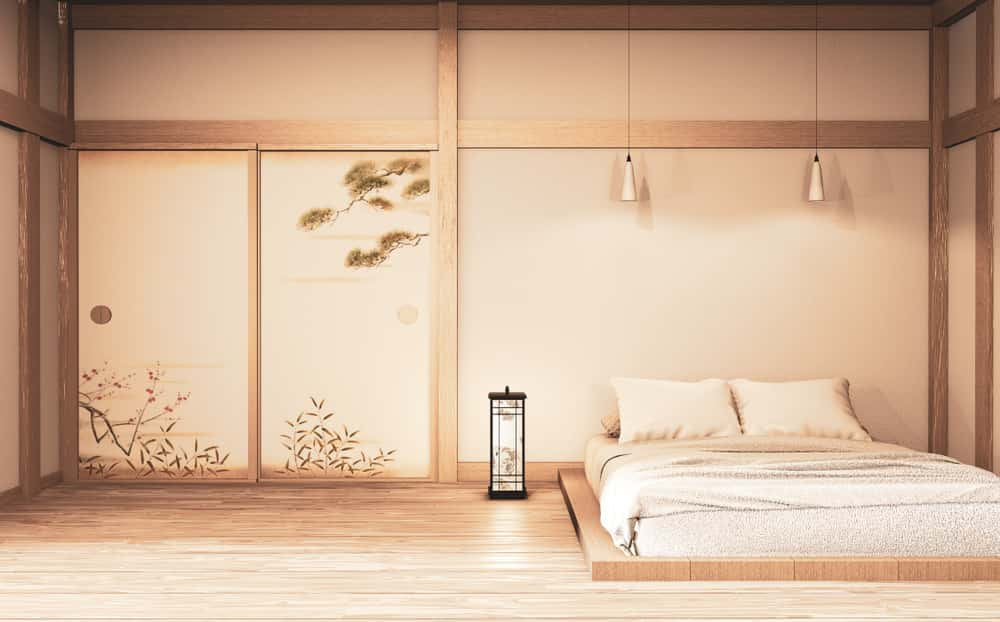
Wabi-Sabi and Hygge
Scandinavian hygge is all about warmth, while Japanese Wabi-Sabi talks about the beauty of the imperfect. This little corner mixes both ideas, with the warm throw and pretty teapot evoking ideas of cozy comfort, while the bare branches of the ikebana arrangement emphasize the perfection that is to be found in imperfection.
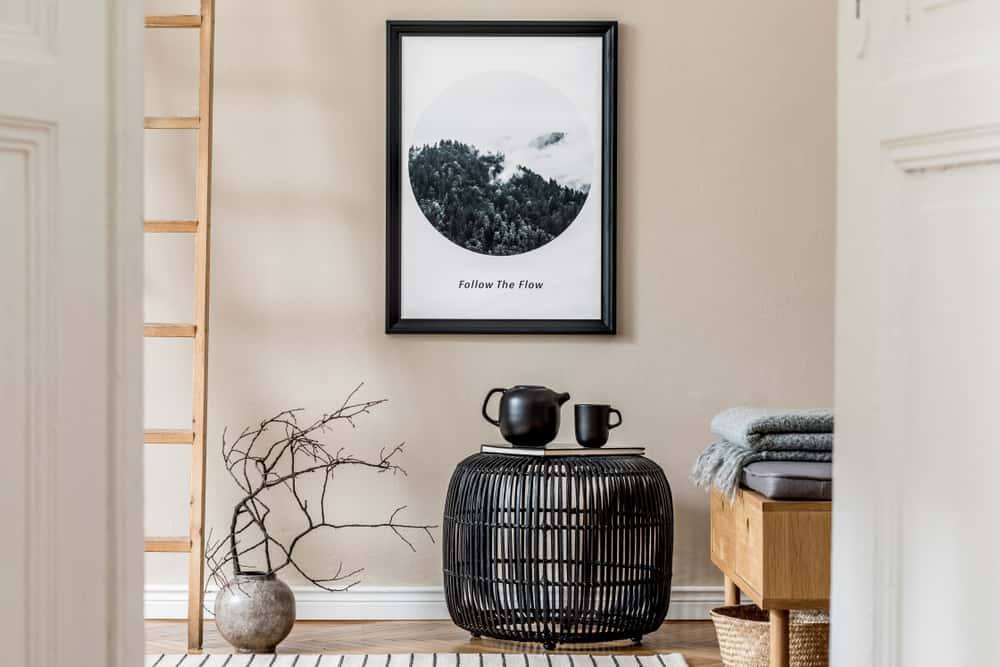
Clean and Calm
This living room draws on the best of both worlds, with the low-lying natural leather sofas reminiscent of Nordic style, while the floor-to-ceiling Japanese screens let in gently, subtle patterns of light and shade and filter out the direct sunlight. The textured beige wall patterns are repeated in the ceiling and lend an air of cohesiveness to the interior.
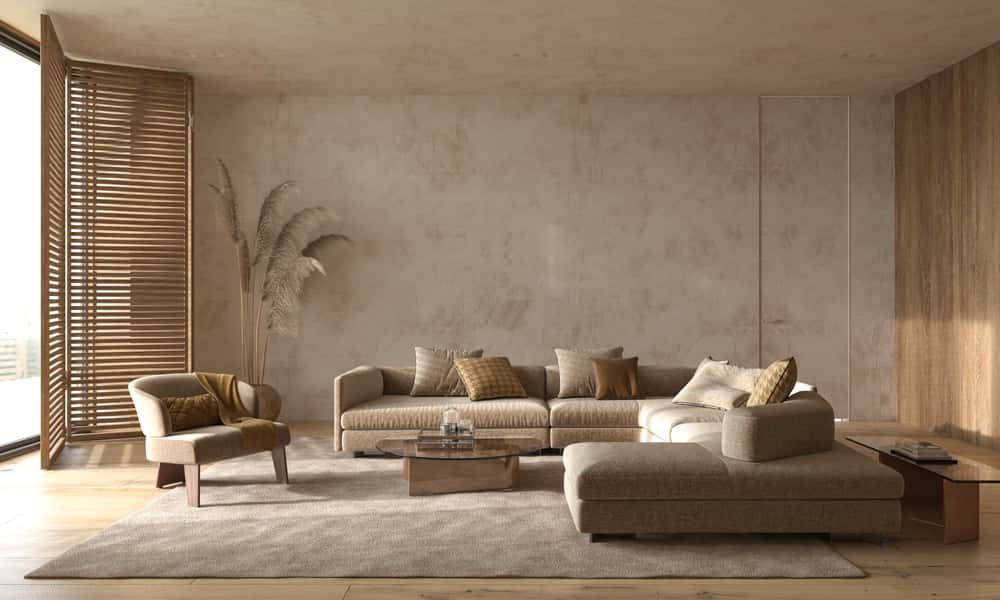
Liked these décor ideas? Japandi is a rising trend, and in today’s stress-ridden world, it’s definitely one that’s here to stay! If you’d like to jump on the Japandi bandwagon, HomeLane can show you the way! Do give us a call, we’d love to help.

